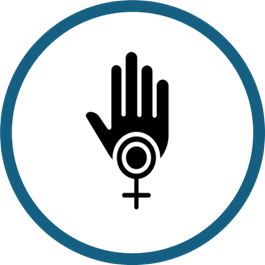Guidance and Sample Behavior Profiles

Conflict Areas
Guidance and Sample Behavior Profiles
Behavior Profiles are a stand-out tool in the Think | BIG (behavior integration guidance) suite of social and behavior change tools. Using Think | BIG ensures that your program takes a whole ecosystem approach and is behavior-led, not intervention-driven. Behavior Profiles first appear in Step 4, during phase one Focus and Analyze, of the three-phase system that comprises BIG.
Using Conflict Areas Sample Behavior Profiles
Countries are searching for ways to integrate behaviors into their work to end gender-based violence. The behaviors included here have been identified as priority behaviors whose practice could contribute substantially to reducing conflict area gender issues. Often times we think that the behavior must be directly tied to the gender-based violence, but working on issues, e.g., property rights, land management, etc., that reduce or eliminate conflict can also reduce or eliminate gender-based violence and potentially other gender issues, such as inequity, lack of decision-making, etc.
Each behavior has been written from the perspective of the person who will carry out the behavior – the primary actor. Informed by a literature review, these Sample Behavior Profiles highlight some of the pathways to change for these behaviors. They are not intended to take the place of context-specific research.
In addition to the ways mentioned in the Behavior Profiles Overview, these Sample Behavior Profiles can help you:
- Demonstrate the pathways to change from behavior to strategies, emphasizing the importance of behavior-led (not intervention-driven) programming.
- Engage with stakeholders on how activities might be aligned around behaviors and the pathways to change.
- Think through some of the inhibiting and motivating factors shown to impact related behavior.
- Identify outcome indicators that measure the uptake of related behaviors.
- Make the case for context-specific development or adaptation of promising interventions.
How to Use Behavior Profiles and Behavior Summaries provides more detailed guidance..
In Behavior Integration, you need to decide which behaviors you want to Prioritize.
Then you will analyze the priority behaviors selected for your country using country- and context-specific research, i.e. creating Behavior Profiles.
Click to view the Sample Behavior Profiles.
Contact us if you have questions or don’t see the kind of Behavior Profile sample you need. We’re here to help!
 Female and youth farmers adopt mechanisms to prevent and respond to conflict
Female and youth farmers adopt mechanisms to prevent and respond to conflict
View PDF | (no Bibliography, based on local formative research)


 The Manoff Group was acquired by JSI in 2022.
The Manoff Group was acquired by JSI in 2022.